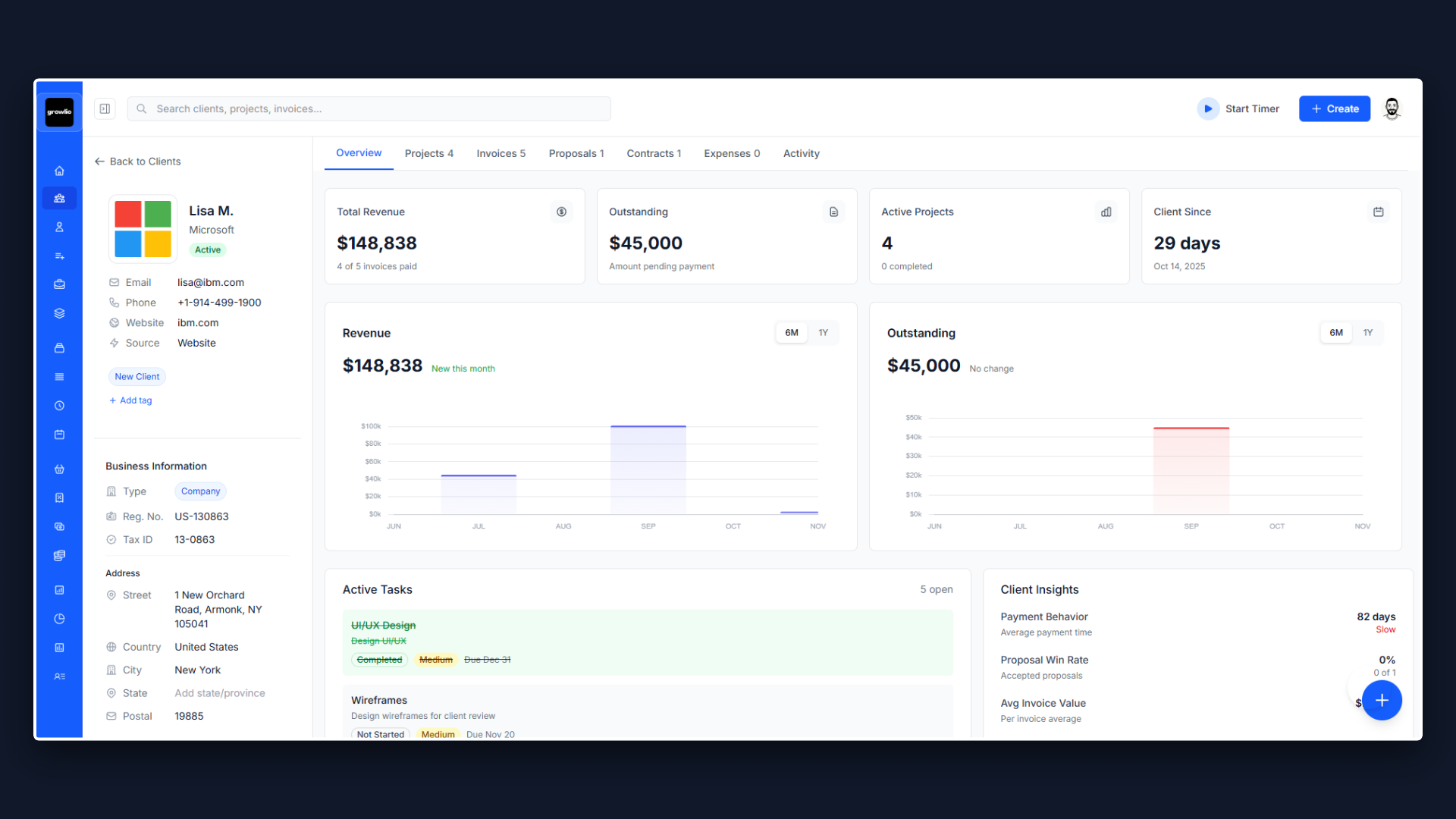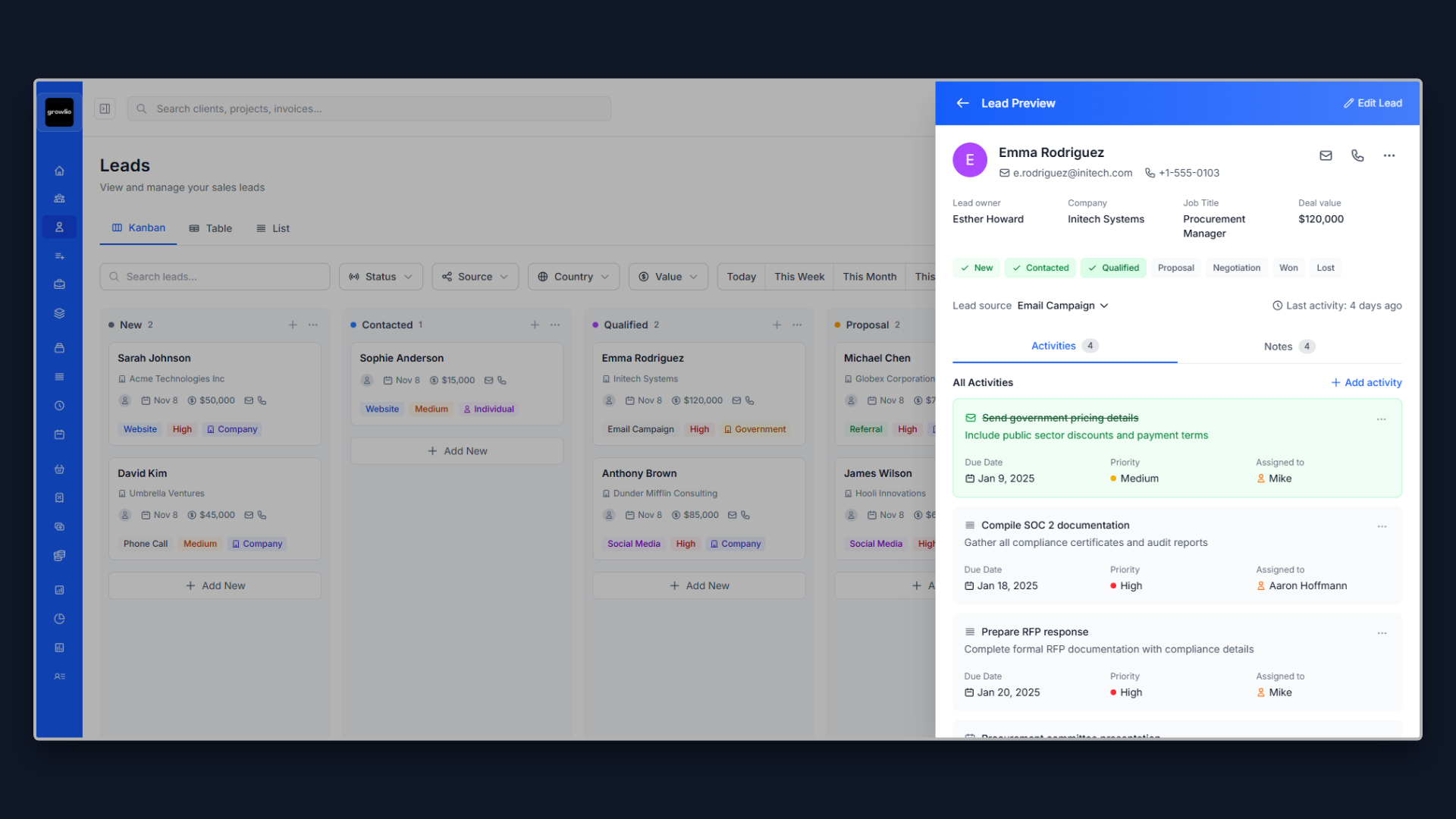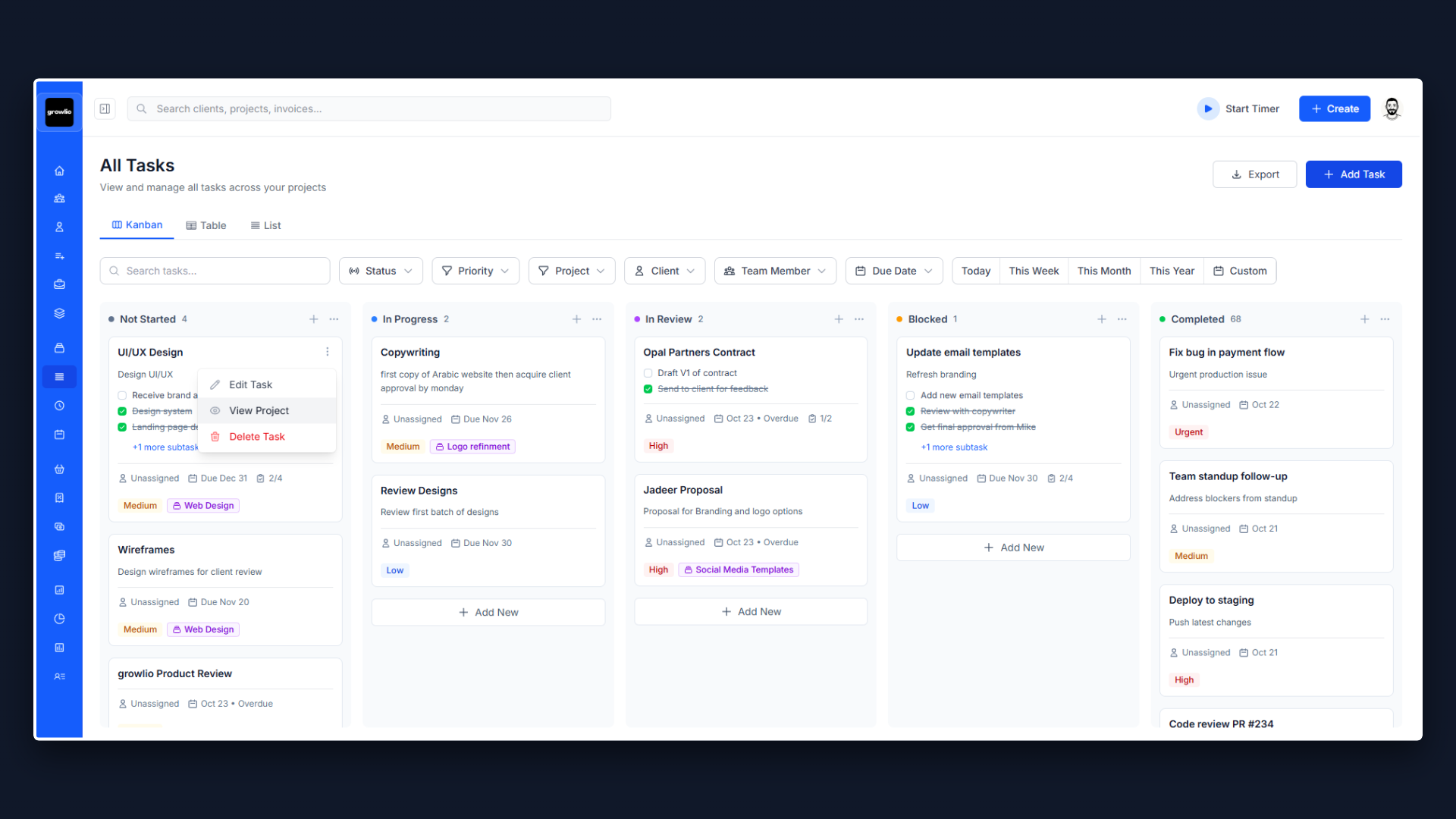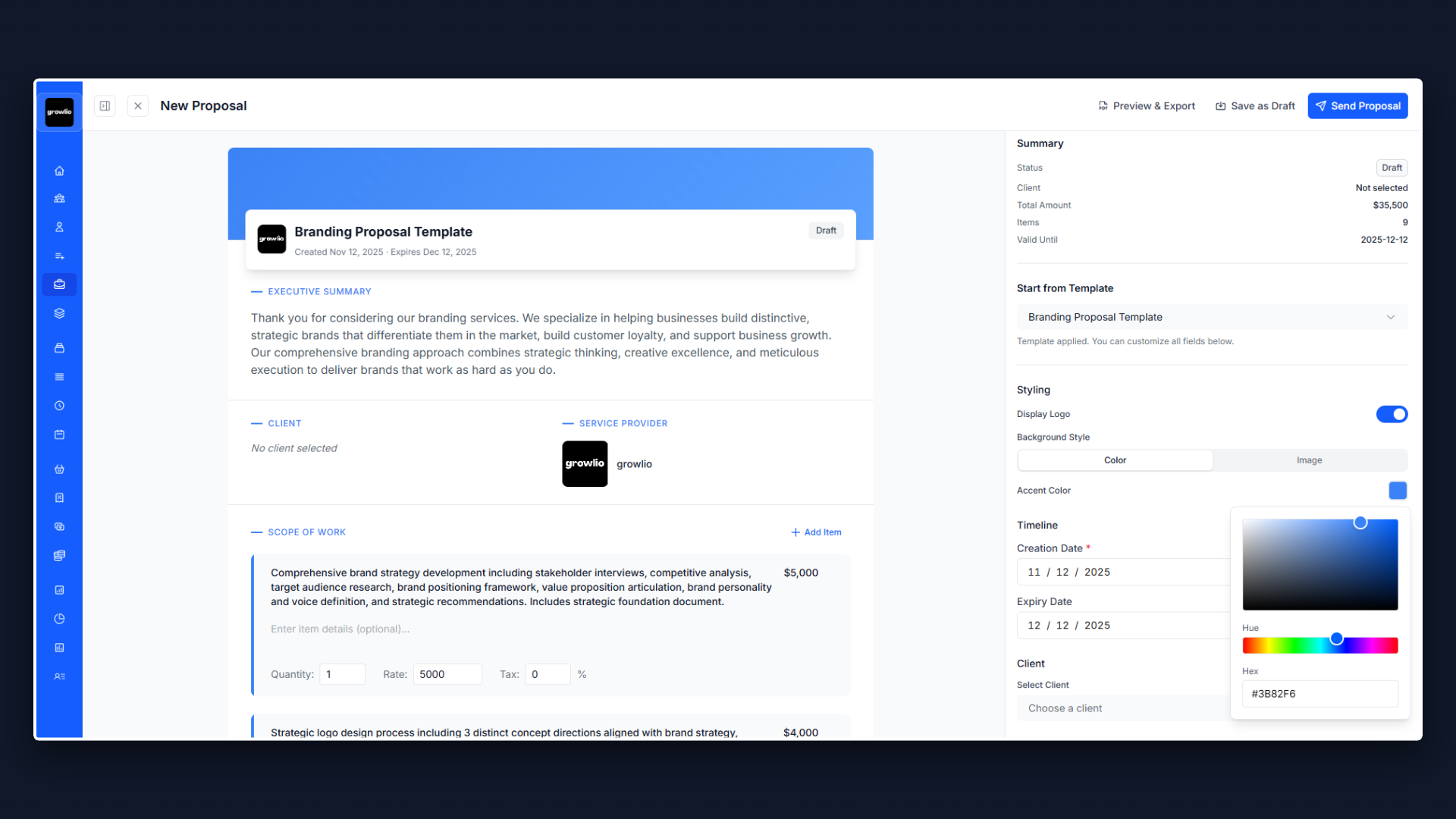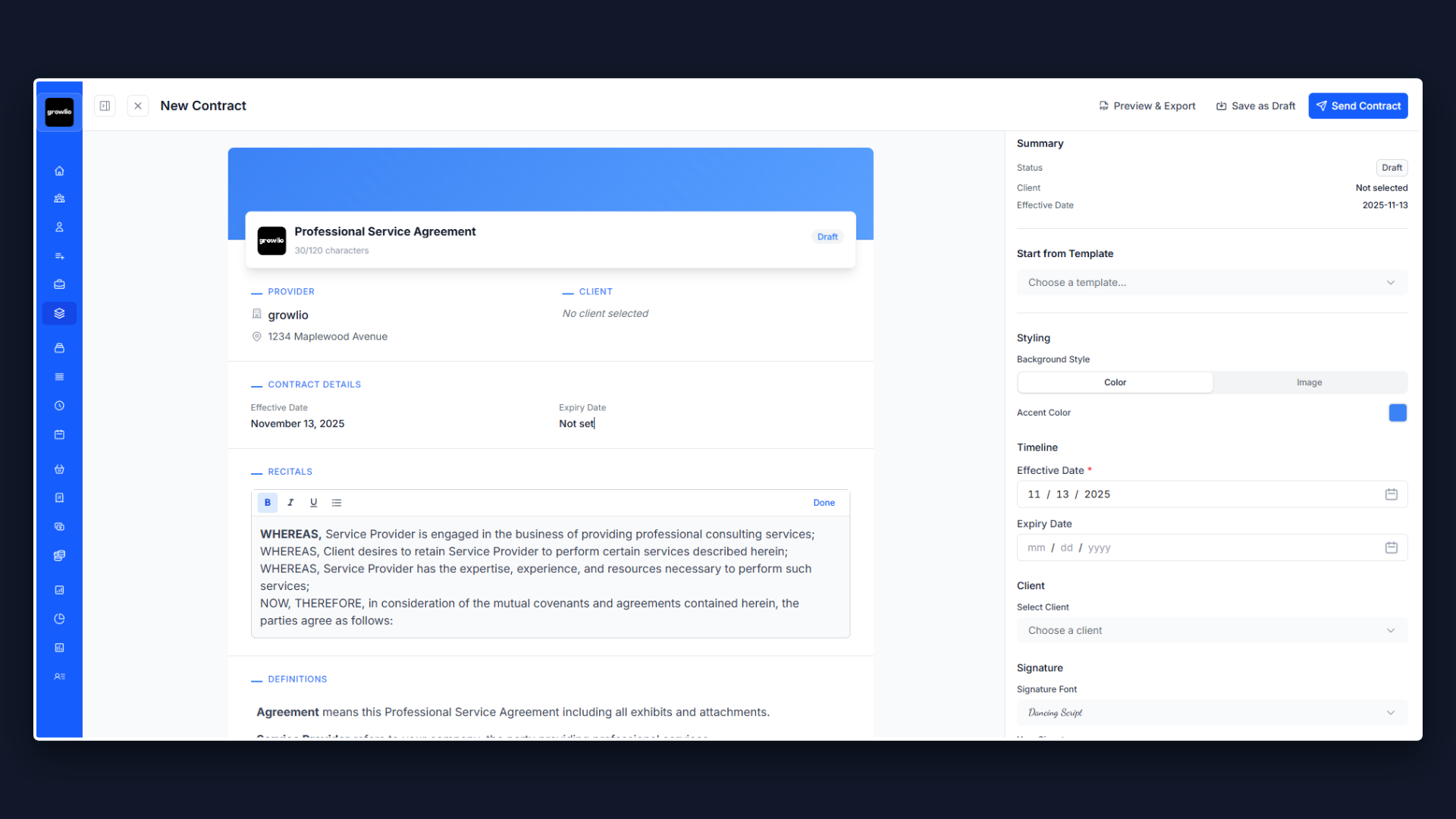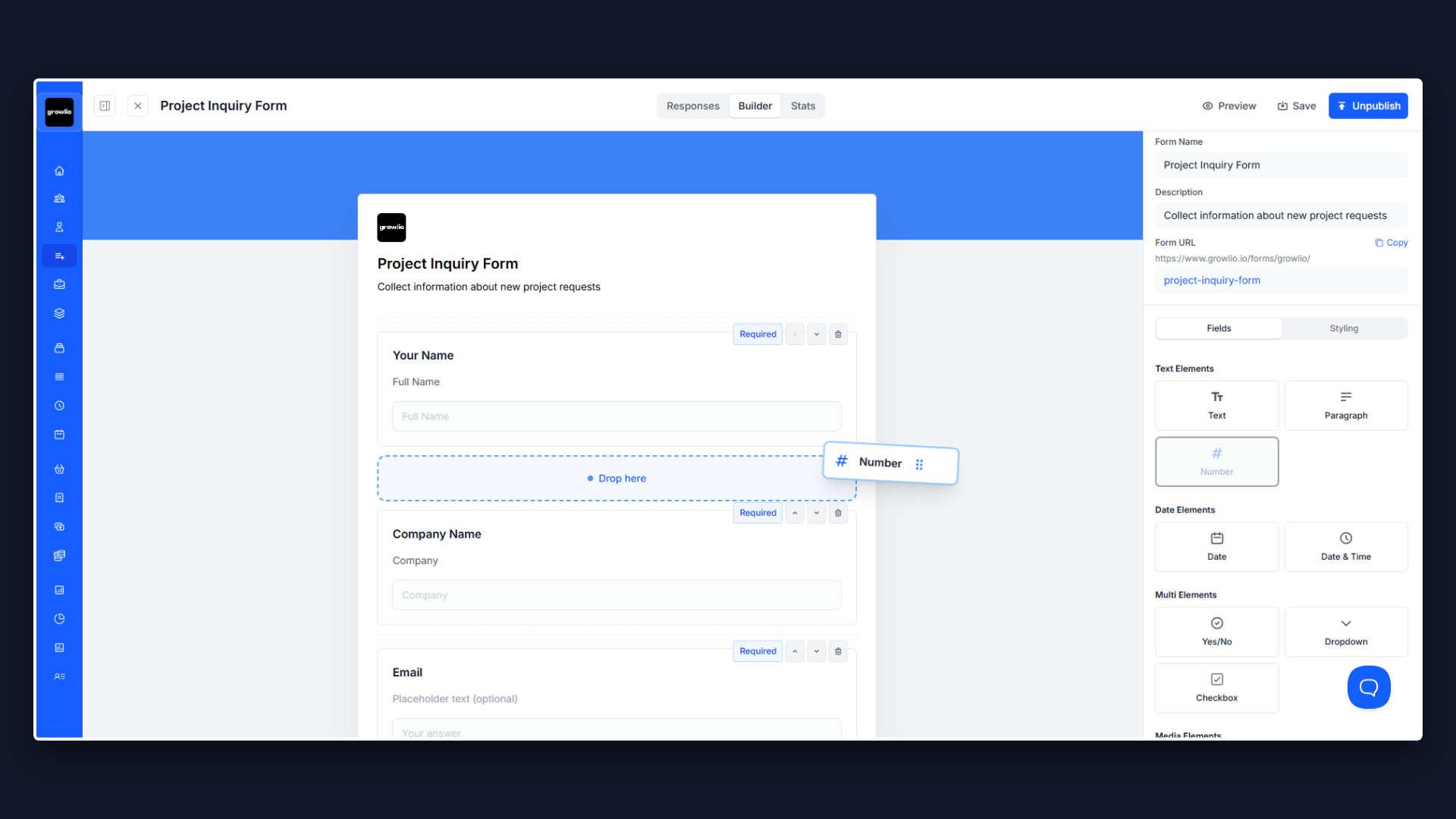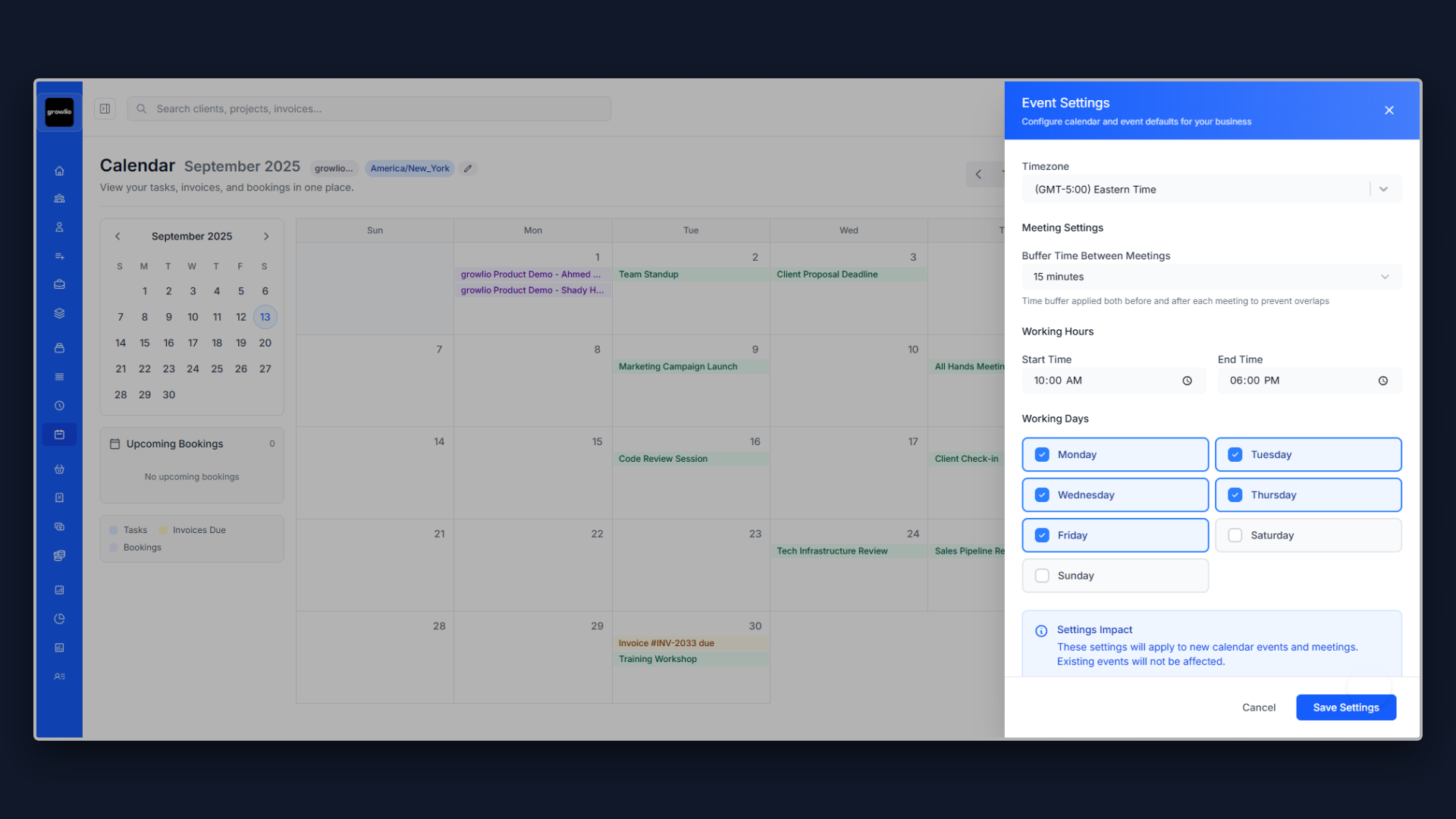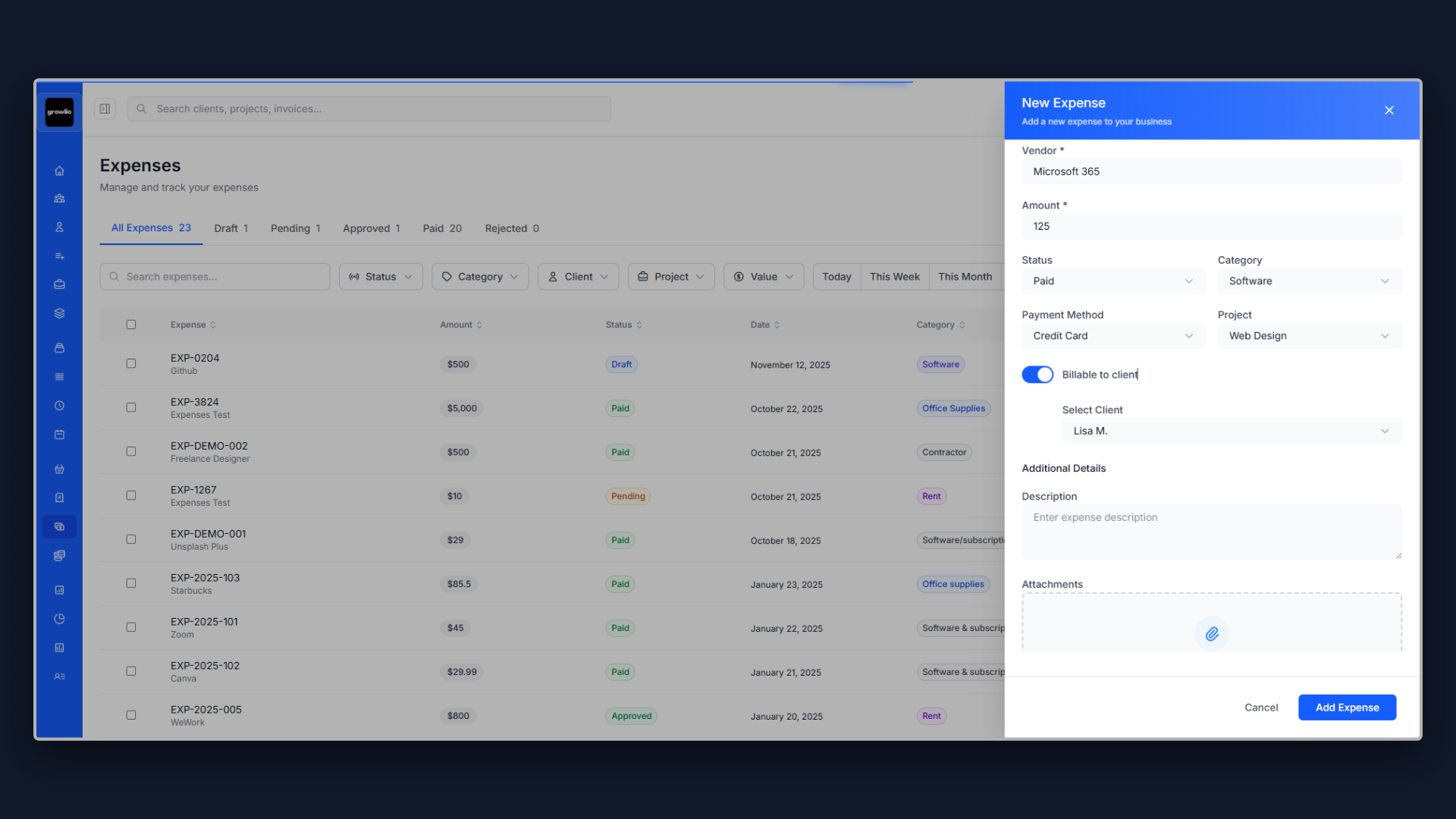Why Your Web Development Proposal Makes or Breaks Your Business
As a web developer or digital agency, you know that 75% of users judge a company's credibility based on website design, and that websites with fast load times convert 2-3x better than slow ones. But here is the harsh reality: even if you are exceptional at building beautiful, high-performance websites with modern technology, you will struggle to win clients if your proposals do not demonstrate your value clearly.
The web development industry generates over $40 billion annually in the United States, with businesses recognizing that their website is often the first—and most important—touchpoint with potential customers. Yet many talented web developers lose projects to competitors who simply write better proposals. This has nothing to do with your development skills and everything to do with how you present them.
Your web development proposal is your first impression, your sales pitch, and your contract all rolled into one document. It needs to educate prospects who may see websites as commodities while simultaneously proving you deliver strategic business value, not just code. This is a delicate balance that many get wrong.
1. Start With the Client's Current Website Problems, Not Your Services
The biggest mistake web developers make is leading with a list of services: "We offer custom web design, CMS development, e-commerce solutions..." Your prospect does not care about your services yet. They care about their problems.
Start your proposal by demonstrating you understand their specific website situation and business impact. Is their current website outdated and hurting credibility? Does it load slowly, driving visitors away? Is it not mobile-friendly, losing mobile traffic? Does it fail to convert visitors into leads? Is it impossible for them to update without paying developers? Are they losing business to competitors with better websites? Address these pain points explicitly.
For example: "Our analysis shows your current website significantly undermines your business objectives. Built on outdated technology in 2017, it loads in 6.8 seconds on mobile—studies show 53% of mobile visitors abandon sites taking over 3 seconds. The design appears dated and unprofessional compared to competitors, potentially costing you 30-40% of potential customers who judge your business based on website appearance. It is not mobile-responsive, creating poor user experience for the 68% of your traffic coming from mobile devices. Your conversion rate is 0.6%—industry average is 2.5-4%—meaning you are leaving 75-85% of potential leads on the table. You cannot update content without calling your previous developer and waiting days for simple changes. This website likely costs you $200,000-$400,000 annually in lost business. A modern, high-performance website could double or triple your conversion rate, improve page speed by 70%, empower your team to update content instantly, and position you as the premium, professional choice in your market."
This approach immediately shows you understand their situation deeply and offer tangible business value. Now they are ready to hear your solution.
2. Include a Website Audit to Demonstrate Your Expertise
Nothing builds credibility faster than showing you have already assessed their website. Include a brief audit section highlighting 3-5 critical issues:
Performance and Technical Issues: Slow page load time (6.8 seconds vs. recommended under 3 seconds), poor mobile performance and mobile usability errors, not using modern web standards or frameworks, excessive page weight (12MB vs. optimal 2-3MB), outdated security practices or missing SSL certificate, broken links and technical errors harming user experience.
Design and User Experience Problems: Outdated visual design appearing unprofessional, poor information architecture making content hard to find, not mobile-responsive or poorly optimized for mobile, weak calls-to-action and conversion elements, inconsistent branding and design across pages, poor readability (small fonts, low contrast, cluttered layouts).
Content and SEO Deficiencies: Thin content averaging 200-300 words per page, missing basic SEO elements (title tags, meta descriptions, headers), poor site structure and URL architecture, no blog or content marketing capability, images missing alt text and proper optimization, duplicate content or poorly organized information.
Business and Conversion Gaps: Low conversion rate (0.6% vs. industry benchmark 2.5-4%), weak or confusing value proposition, missing trust signals (testimonials, case studies, credentials), difficult-to-find contact information or lead capture, no clear customer journey or funnel, content management requires developer intervention making updates slow and expensive.
This mini audit serves multiple purposes: it proves you understand web development beyond aesthetics, it quantifies business impact of problems, and it makes your proposed solution feel essential rather than optional.
3. Break Down Your Web Development Process Into Clear Phases
Web development projects have many moving parts, but your proposal should not confuse clients. Break your process into clear, logical phases.
Phase 1: Discovery & Strategy (Week 1-2)
Stakeholder interviews understanding goals and requirements, target audience and user persona research, competitive website analysis and benchmarking, content audit and information architecture planning, technical requirements and integrations specification, sitemap and user flow development, feature and functionality prioritization, project timeline and milestone planning.
Phase 2: Design (Week 2-4)
Wireframing and UX design for key pages, visual design concepts (2-3 directions), homepage and key page mockups, design system and style guide development, mobile-responsive design for all breakpoints, interactive prototype for user testing, revision rounds and design refinement, final design approval and asset preparation.
Phase 3: Development (Week 4-8)
Front-end development (HTML, CSS, JavaScript), back-end development and database setup, CMS integration and configuration, custom functionality development, third-party integrations (CRM, payments, etc.), responsive development and mobile optimization, browser compatibility testing, quality assurance and bug fixing.
Phase 4: Content & Launch (Week 8-10)
Content migration or creation, SEO optimization and metadata, image optimization and alt text, form and conversion element setup, analytics and tracking implementation, security hardening and SSL setup, performance optimization and speed testing, staging site review and client approval, DNS migration and go-live, post-launch monitoring and support.
This phased approach makes web development feel manageable and sets clear expectations for timeline and involvement at each stage.
4. Set Realistic Expectations About Timeline and Process
One of the fastest ways to lose trust is overpromising timeline. Clients appreciate honesty about web development realities.
Be explicit: "Quality web development takes time. A typical business website takes 8-12 weeks from kickoff to launch, depending on complexity and content readiness. Rush projects compromise quality and often take longer due to mistakes requiring fixes. E-commerce sites with extensive products or custom functionality can take 12-16 weeks. Large enterprise websites may require 16-24 weeks. Timeline depends heavily on client feedback speed and content preparation—delays in providing content or feedback extend timeline proportionally."
Provide a realistic projection: "For your website project, we estimate: Week 1-2: Discovery, planning, and wireframing. Week 3-4: Design concepts and revisions. Week 5-8: Development and CMS setup. Week 9-10: Content addition, testing, and launch. Total timeline: 10-12 weeks from signed contract to live website. This assumes timely client feedback and content delivery. We provide detailed project timeline with specific dates and milestones after kickoff."
Address client responsibilities: "Successful projects require client involvement: timely feedback on designs and work-in-progress (within 2-3 business days), content provision (copy, images, videos) by agreed deadlines, stakeholder review and approval at key milestones, access to necessary systems and accounts, availability for kickoff and review meetings. Client delays are leading cause of timeline extensions—we cannot control feedback and content timing. We communicate proactively about timeline impacts and work collaboratively to stay on track."
This honesty prevents unrealistic expectations and clarifies shared responsibility for project success.
5. Explain Your Design Approach and User Experience Focus
Many clients do not understand what makes web design effective. Use your proposal to educate them on your strategic design approach.
Explain that effective web design is: user-centered (designed for your target audience, not personal preferences), conversion-focused (every element supports business goals), mobile-first (60% of traffic is mobile—design starts there), brand-consistent (visual identity reflects your brand positioning), accessible (works for users with disabilities, follows WCAG standards), fast-loading (optimized for performance from design stage), and SEO-friendly (structure and content support search visibility).
Outline your design process: "We design strategically, not decoratively: user research understanding your target audience needs and behaviors, competitive analysis identifying opportunities for differentiation, wireframing establishing information architecture and user flows before visual design, visual design creating on-brand aesthetics that build trust and credibility, interactive prototypes allowing usability testing before development, design systems ensuring consistency across all pages, mobile-responsive design that works beautifully on all devices. Design choices are intentional and strategic, not arbitrary aesthetic preferences."
Give specific examples: "Instead of flashy animations that slow loading and annoy users, we use subtle motion that guides attention and enhances usability. Instead of jargon-heavy content, we write clear, benefit-focused copy that resonates with your audience. Instead of burying your contact form, we place strategic CTAs throughout the journey. Instead of stock photos of models in suits, we recommend authentic photos of your actual team and work. These design decisions seem small but compound into significantly better user experience and conversion rates."
This demonstrates you think strategically about design as business tool, not just aesthetics.
6. Address Your Technology Stack and Development Standards
Technology choices matter but can confuse non-technical clients. Explain your approach in understandable terms.
Explain technology selection: "We select technology based on your needs, not trends: WordPress for content-heavy sites needing easy updates (powers 43% of web), Webflow for design-focused sites with visual editing, Shopify for e-commerce focusing on selling products, custom development (React, Next.js) for complex applications, headless CMS for API-driven flexible architectures. We recommend technology matching your team capabilities, budget, and long-term needs—not one-size-fits-all or whatever we prefer building."
Outline development standards: "We follow industry best practices ensuring quality: semantic HTML5 and modern CSS, JavaScript frameworks when appropriate (not over-engineering), responsive design with mobile-first approach, accessibility standards (WCAG 2.1 AA minimum), SEO-friendly markup and structure, performance optimization (lazy loading, image optimization, code minification), security best practices and regular updates, browser compatibility (Chrome, Safari, Firefox, Edge), clean, documented, maintainable code. Professional development avoiding technical debt and future problems."
Address CMS and content management: "Content management is critical—you need to update your website without calling developers: intuitive visual editor for non-technical team members, flexible page builder or block-based editing, media library for managing images and files, SEO controls for each page, user permissions and workflow if needed, mobile-responsive editing and preview, training and documentation for your team. CMS selection depends on your team technical comfort and update frequency—we guide you to the right choice."
7. Explain Your SEO-Friendly Development Approach
Many developers ignore SEO or add it as afterthought. Show prospects you build SEO into foundation.
Explain SEO importance in development: "A beautiful website that no one finds in search is business failure. We build SEO into development from start: clean semantic HTML structure, fast page load speed (Core Web Vitals), mobile-responsive and mobile-friendly, proper header hierarchy (H1, H2, H3), SEO-friendly URL structure, XML sitemap generation, schema markup for rich results, image optimization with alt text, meta title and description controls. Technical SEO foundation supports your content and marketing efforts—trying to add SEO after launch is expensive and less effective."
Outline on-page SEO setup: "Every page includes SEO essentials: unique meta titles and descriptions, proper header tag usage, internal linking structure, open graph tags for social sharing, canonical tags preventing duplicate content, page speed optimization, image optimization and compression, mobile usability, SSL certificate and HTTPS. We set up foundation—ongoing SEO requires content and link building beyond development scope."
Address analytics and tracking: "We implement tracking and analytics from launch: Google Analytics 4 configuration, Google Search Console setup, conversion goal tracking, event tracking for key interactions, heatmap tools if desired (Hotjar, Crazy Egg), tag manager for flexible tracking, privacy compliance (cookie consent if required). Proper tracking enables optimization and proves website ROI—essential for measuring success and improving over time."
8. Explain Your Performance Optimization Strategy
Website speed directly impacts business results but many developers ignore it. Demonstrate your performance focus.
Explain performance importance: "Page speed is not vanity metric—it directly impacts revenue: Google uses speed as ranking factor, 53% of mobile users abandon sites taking over 3 seconds to load, every 0.1 second delay reduces conversions by 7%, fast sites rank higher in search results, slow sites frustrate users and damage brand perception. We optimize performance from design through launch—making fast sites is harder than making pretty sites, but business impact justifies effort."
Outline optimization tactics: "We use comprehensive performance optimization: image optimization and compression (WebP format, lazy loading), code minification and compression, browser caching and CDN integration, efficient hosting and server configuration, minimal third-party scripts and bloat, optimized database queries, async loading for non-critical resources, performance budgets preventing feature creep. Target: under 3 seconds load time on 3G mobile, 90+ Lighthouse performance score."
Address ongoing performance: "Performance requires ongoing attention—new content and features can slow sites over time: performance monitoring and alerting, quarterly performance audits, optimization recommendations as site grows, cache clearing and CDN management, database optimization, plugin and dependency updates, testing after major changes. We can provide ongoing performance monitoring or train your team on maintaining speed."
9. Explain Your Security and Maintenance Approach
Security and maintenance are often overlooked until problems occur. Address them proactively in your proposal.
Explain security importance: "Website security is critical—breaches damage reputation and cost thousands to remediate: SSL certificate and HTTPS encryption, secure hosting and server configuration, regular software and CMS updates, strong password policies and two-factor authentication, malware scanning and monitoring, backup and disaster recovery, protection against common attacks (SQL injection, XSS, CSRF), compliance with privacy regulations (GDPR, CCPA). Security is not optional—it is foundational requirement for professional websites."
Outline maintenance needs: "Websites require ongoing maintenance like cars require oil changes: CMS and plugin updates (monthly), security patches and vulnerability fixes, backup verification and testing, uptime monitoring and alerts, performance monitoring and optimization, content updates and edits, form and integration testing, broken link checking, SSL certificate renewal. Neglected websites accumulate technical debt, security vulnerabilities, and eventually break or get hacked."
Address maintenance options: "We offer maintenance packages or can train your team: Basic Maintenance ($150-300/month): CMS updates, backups, security monitoring, uptime monitoring. Standard Maintenance ($400-600/month): Everything in Basic plus minor content updates, performance monitoring, quarterly optimization. Premium Maintenance ($800-1,200/month): Everything in Standard plus priority support, significant content changes, ongoing optimization, security hardening. Alternatively, we provide training and documentation for in-house maintenance—but most clients prefer outsourcing to experts."
10. Include Case Studies and Proof of Results
Nothing sells like proven results. Include 2-3 relevant web development case studies showing business impact.
Format them simply: Client: B2B professional services firm with outdated 2015 website. Challenge: Website appeared unprofessional vs. competitors, 8-second load time, 0.7% conversion rate, could not update content, losing business to competitors with modern sites. Solution: Complete website redesign and rebuild on WordPress, mobile-first responsive design, performance optimization, SEO-friendly structure, intuitive CMS for client updates, strategic CTAs and conversion elements. Results: Page load time reduced from 8 seconds to 2.1 seconds (74% improvement), mobile traffic increased 145% due to responsive design, conversion rate improved from 0.7% to 2.8% (300% increase), client updates website weekly without developer help, inbound leads increased 190% year-over-year, website investment paid for itself within 4 months through increased conversions.
Show specific improvements: "Our websites deliver measurable business impact: performance improvements (typically 60-80% faster load times), conversion rate increases (typically 2-4x improvement through strategic design and UX), mobile traffic growth (50-150% as mobile experience improves), SEO improvements (better rankings due to technical foundation), team empowerment (clients update sites instantly vs. waiting on developers), brand perception (professional site building credibility and trust). Websites are business investments generating returns through increased conversions and reduced costs."
Address technology and longevity: "We build websites that last: modern technology with long-term support (not experimental frameworks), clean code that future developers can work with, documentation and training for your team, scalable architecture supporting growth, security and performance best practices, SEO-friendly foundation, ownership and portability (you own all code and assets). Average client website lasts 3-5 years before redesign—we build for longevity, not planned obsolescence."
If you are newer to web development, reference: websites you built in previous employment or freelance work, personal projects or portfolio site demonstrating capabilities, specific impressive metrics from any projects (tripled conversion rate, halved page load time), client testimonials even if projects were smaller, or open source contributions showing code quality.
11. Transparent Pricing That Reflects Value
Web development pricing varies enormously by scope and complexity. However, vague pricing makes clients nervous.
Provide clear pricing ranges: Brochure Website (5-10 pages) - $5,000-$10,000: Custom design, responsive development, CMS integration (WordPress or similar), basic SEO setup, contact forms, Google Analytics, content migration for existing content, 2 revision rounds, training. Ideal for service businesses needing professional online presence. Business Website (10-25 pages) - $12,000-$25,000: Everything in Brochure, plus more complex design and functionality, blog with content strategy, advanced SEO optimization, integrations (CRM, email marketing), custom functionality, e-commerce for basic products, more extensive content and pages. Ideal for growing businesses needing comprehensive site. E-commerce Website (25-100 products) - $20,000-$40,000: Custom e-commerce design, Shopify or WooCommerce development, product catalog setup, payment gateway integration, shipping and tax configuration, inventory management, customer accounts, mobile shopping optimization, conversion optimization. Ideal for online stores. Custom Web Application - $30,000-$100,000+: Complex custom development, database architecture, API development, user authentication and permissions, custom admin dashboards, third-party integrations, scalable infrastructure, security hardening. Ideal for SaaS products or complex business applications. Ongoing Support & Maintenance - $150-$1,200/month: Updates, backups, security, monitoring, content changes, optimization—based on needs.
Explain pricing factors: "Website pricing depends on: design complexity (custom vs. template-based), number of pages and content volume, custom functionality and features, integrations with other systems, e-commerce requirements, content creation needs, timeline urgency, ongoing maintenance requirements. We provide detailed quotes after discovery call understanding your specific needs—these ranges help set expectations."
Address value perspective: "Compare website cost to business impact: if new website increases conversion rate from 1% to 2.5% on 10,000 monthly visitors, that is 150 additional leads monthly. If those leads are worth $500 each in potential revenue, that is $75,000 monthly or $900,000 annual impact. Website investment of $15,000-25,000 generates 30-60x ROI in first year alone. Professional websites are not expenses—they are business investments with measurable returns through increased conversions, improved efficiency, and competitive positioning."
12. Make Next Steps Crystal Clear
Do not leave your prospect wondering what happens next. End your proposal with a clear call to action and process.
"Ready to build a high-performance website that drives measurable business results and positions you as the professional choice in your market? Here is how we get started: Step 1: Sign the proposal and return it by [date] with project deposit (typically 30-50%). Step 2: We will schedule a kickoff meeting within 48 hours to begin discovery and planning. Step 3: Design phase begins within 1 week with mockups presented in 2-3 weeks. Step 4: Development begins after design approval with launch in 8-12 weeks total. Questions? Schedule a call with me at [calendar link] or reply to this email."
This removes friction and makes it easy for prospects to say yes. The clearer you make the path forward, the more likely they are to take it.
Final Thoughts on Web Development Proposals
Your web development proposal is not just a formality—it is a sales tool, an educational resource, and a trust-building document. The web developers who win the most clients are not always the ones with the flashiest portfolios; they are the ones who best explain web development value and process in a way that makes sense to business owners.
Take the time to customize each proposal for your prospect. Reference their specific website problems, business impact of those problems, and competitive landscape. Show that you understand their industry and target audience. Demonstrate your expertise through a website audit and strong case studies showing business results. Set realistic expectations about timeline, process, and client responsibilities. And make it easy to say yes.
Remember: a great web development proposal proves you understand their business and audience, demonstrates you have comprehensive technical and design expertise, shows evidence you can deliver high-performance websites that drive business results, and makes the investment feel worthwhile given potential ROI and competitive impact. Get these elements right, and you will win more projects—even if your competitors have lower prices or bigger portfolios.
